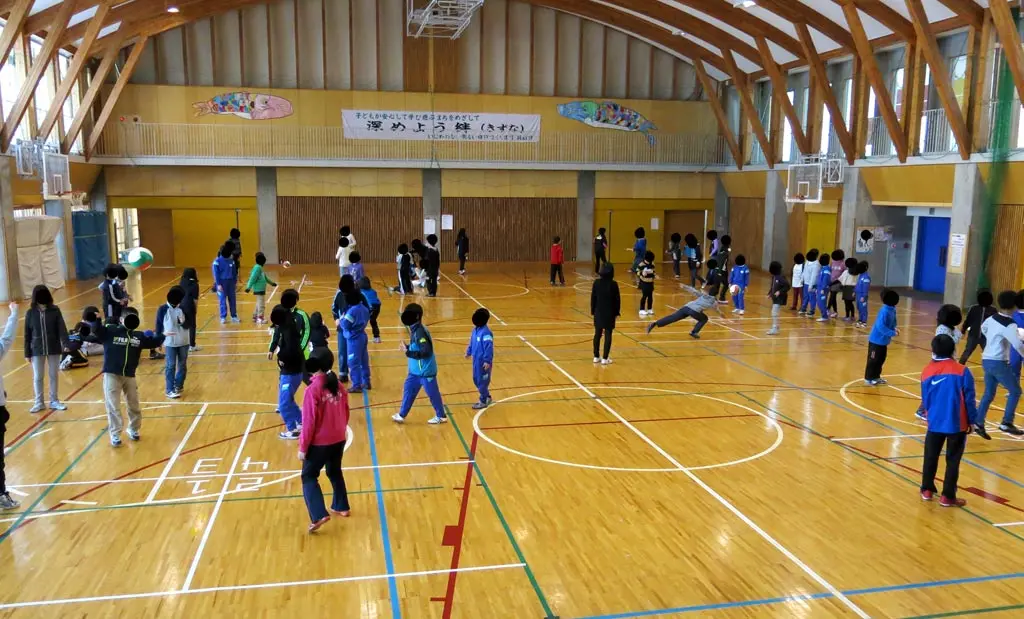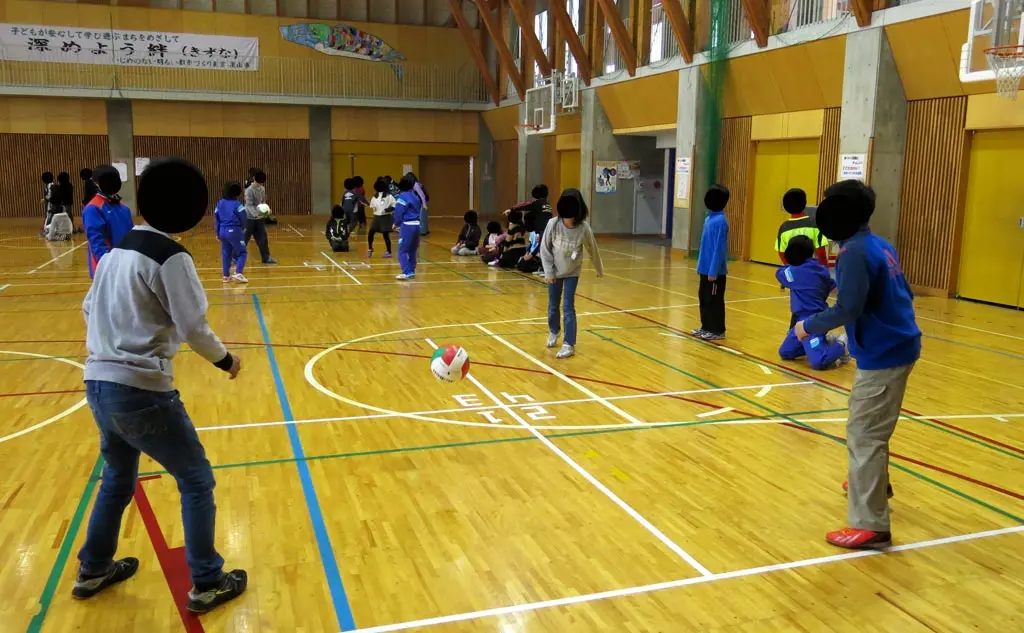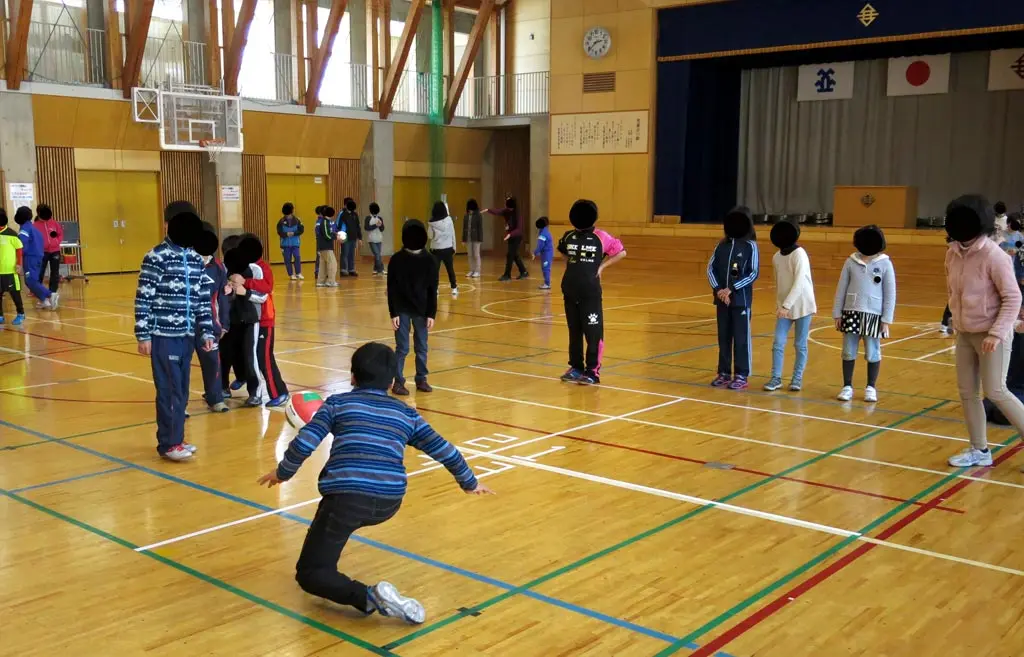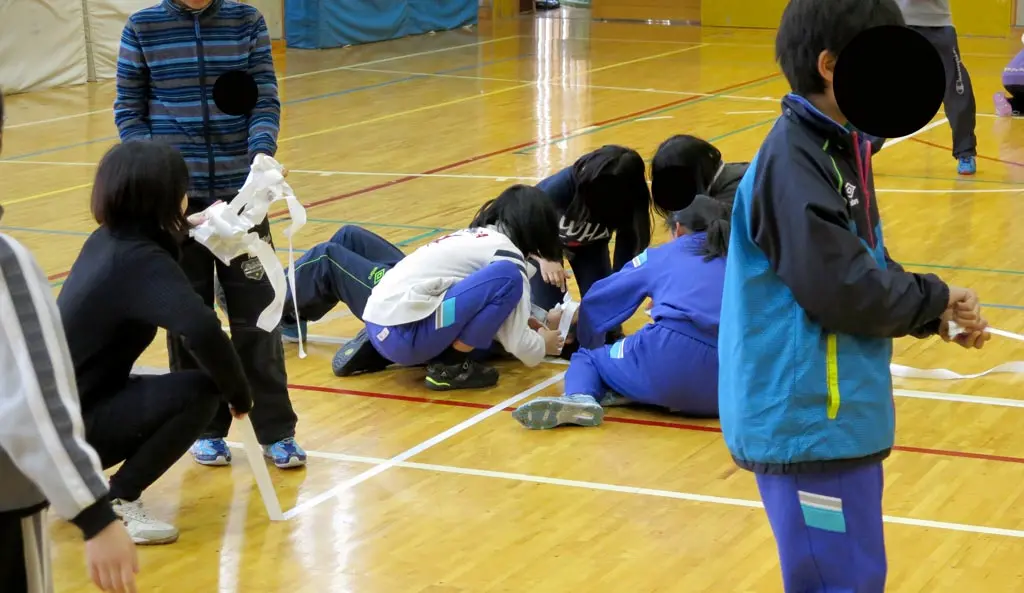For my final 5年生 and 6年生 classes of the year, we played Four Square. This was a game my friends and I played quite a bit back in elementary school, so I thought it would be fun to teach students this game, and see what they thought. I'm pretty sure it's still played today in American elementary schools.
Originally, I wanted to do something else this year, since I had done Four Square last year. But scheduling classes at the end of the year is difficult as graduation practice is very important and takes over much of the schedule. In order to have a final game for a class, I would have to teach all 5年生 together at one of my schools.
Whatever. I pulled out my Four Square plan from last year, and suggested we could do this in the gym with everyone together. We found a free period for the gym, and scheduled the 5年生 class for that time, then scheduled all my other classes around that.
And yesterday, we played!
Last year, I made only 2 four square courts. I had 80 students, and was able to teach each class at a time. Everyone had a great time, but with 20 kids per court, many kids were bored on the side lines waiting to get into the game. They didn't pay attention half the time, and just sat with their friends doing whatever.
Given the space we had in the full gym, and all 70 students this year together, we were able to make 6 courts.
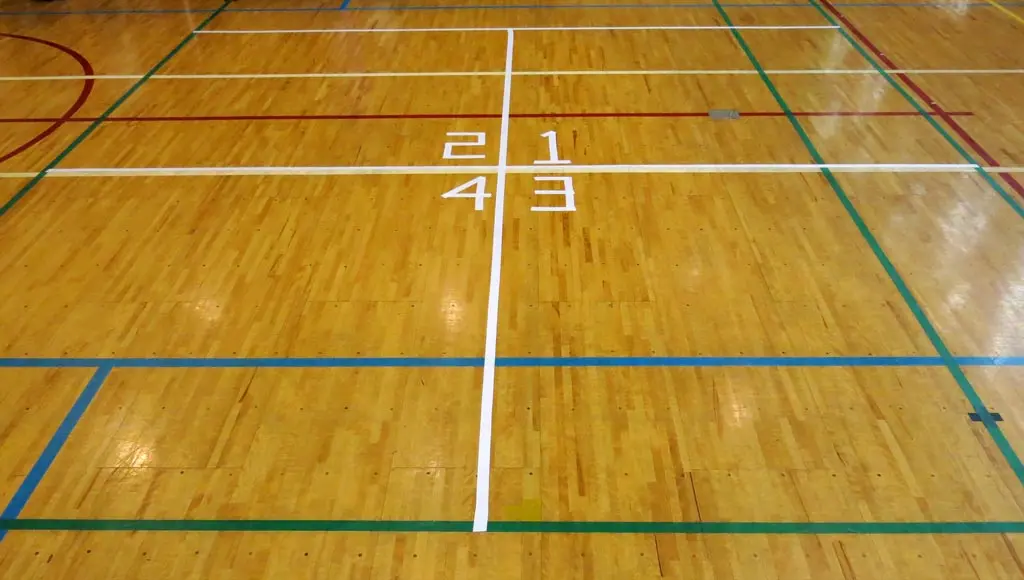
The night before we were to play Four Square, I went to school. The 5年生 teachers and I laid down the tape to create 6 courts. As you can see above, we cheated a little bit and used some existing lines.
Each court is 5 meters by 5 meters, and then divided down the middle at the 250 cm mark. Since we cheated, these courts were actually 470 cm in "diameter". Whatever, close enough.
I bought this tape at my local Daiso ダイソ, which is a chain of 100円 stores. Each roll of tape had 16m. 2 rolls were required to make one complete court. So, I bought 12 rolls to cover the 6 courts we had planned. Since we used those existing lines, we only used 6 rolls. Plus I had some left over from last year, too.
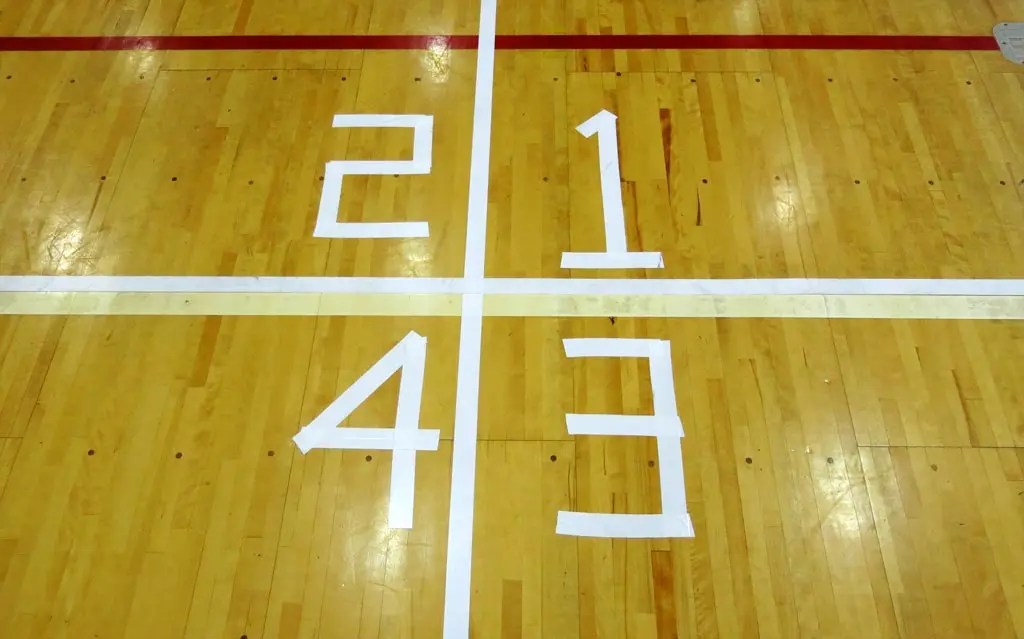
We also laid out the tape for the numbers. Number 1 and 4 must be opposed, but other than that, the layout of the numbers doesn't matter at all. And really, that 1-4 rule is considered more of a "house rule" anyway.
I had already thoroughly explained the rules to my teachers, so they already knew how to play. We even played a few practice rounds together after making the courts so everyone fully understood the rules.
During class, I explained the rules in English, and they would translate for the students that couldn't understand. Eventually the teachers took over the explanation since we had to stop every minute to tell the kids the shut up.
It took a little while to explain all the rules but many of the students understood. We got 5 students as volunteers, and had them play a mock game to further demonstrate the rules for the students. Then they were off!
The teachers and I each went to a court to referee some students and get them started. We explained that if you are waiting in line, you must referee the game, too.
Everything went AMAZING. So smooth. Way smoother than last year. Last year, there was at least one student in all my classes left crying. Other students got really pissed off when they lost. There was none of that this year. All the 5年生 were very sportsmanlike in their defeat, and victories.
Having the extra courts really kept the students moving and into the game. Also, any fight or contested result was simply met with a do-over. もう一回! We weren't keeping score, so there were no real stakes. 5 or 6 games of waiting in line, and you were back into it.
For the first 10 minutes, we made everyone stick to their teams. For the remaining 6 or 7 minutes, when they lost, they would advance to the next team, and continue cycling around to different teams. That way they could start playing with other kids, rather than being stuck with their team.
As mentioned before, the students loved every minute of running around, and smashing balls into the floor. Some students immediately understood strategies of hitting the ball near the opponent's feet. Many students had no reservations of diving for the ball, and lightly knocking it into their opponent's squares. Others were quickly dodging balls headed out of bounds.
Despite having many annoying kids with attention problems, and constantly having to shush and yell at them in class, they paid enough attention to understand the rules. And even if they didn't, the other kids put them in line when they made mistakes.
At the end, I connected this back in class by mentioning that I played this game when I was an elementary student. And that it's still played today by many elementary students in America. So, culture is my excuse for this one.
Also, I made them remember the name of the game since it's vocabulary they should know.
After class had finished, all the students ran around and helped me tear down the courts.
Awww, that was nice of them. But then, they started making tape balls, and throwing them at each other, and being annoying again.
It was a good day, though.
